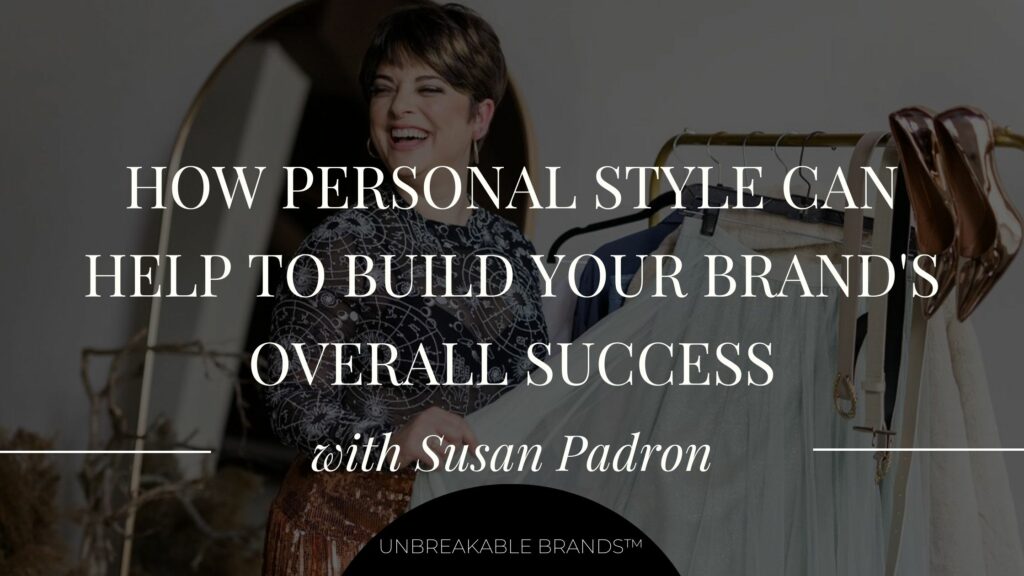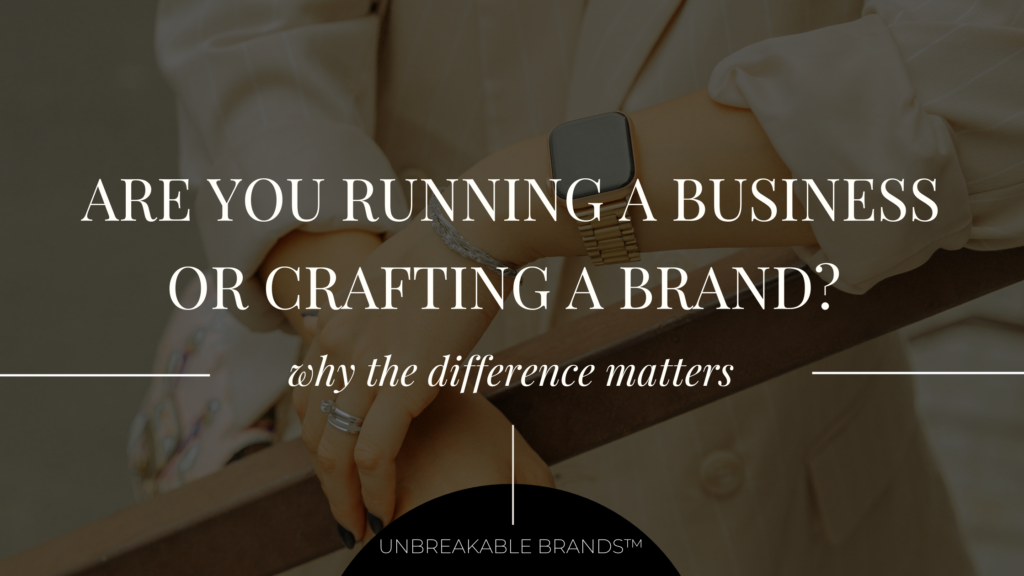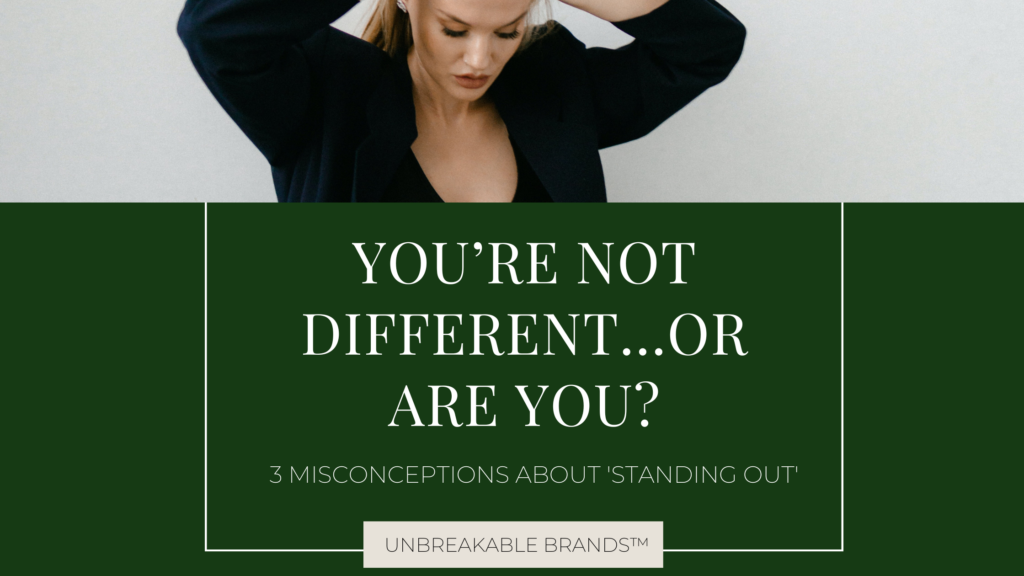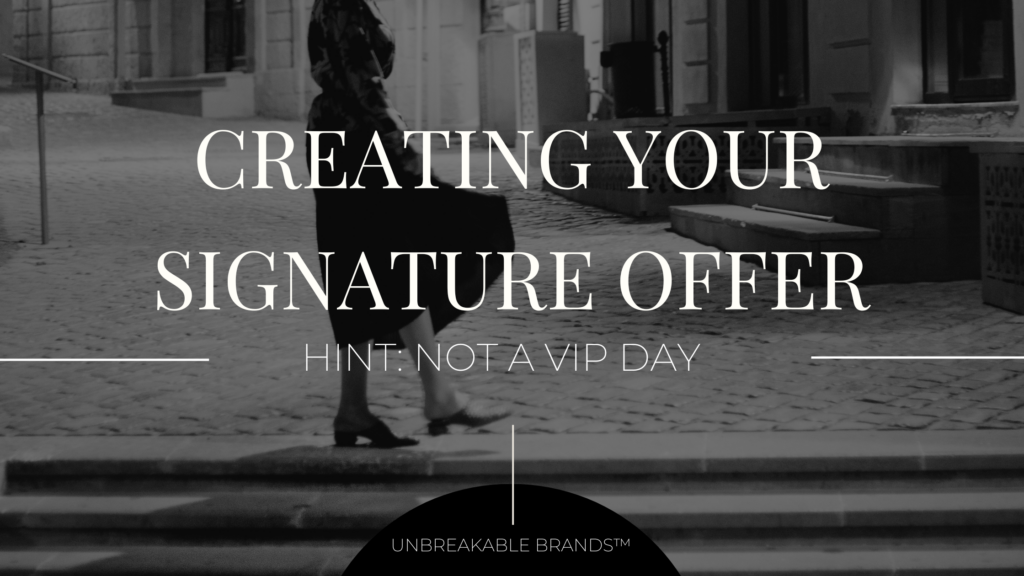I am so thrilled to welcome Susan Padron to the show today and we will be chatting about how personal style can help build your overall brand success.
Susan Padron is a published author and intuitive personal stylist who works with celebrities and rising entrepreneurs to align their style and find their confidence again. She is a sought after thought leader on style informed by your inner truth, not systematic or patriarchal metrics, sizing, body types and gender norms- which has landed her features in Bustle, InStyle, Business Insider, and WHYY (PBS+npr).
Welcome Susan!
You become an extension of your brand, or your brand becomes an extension of you.
– Susan Padron, Intuitive Personal Stylist
Here’s what you can expect to hear in this episode:
- Susan’s background and journey as a personal stylist
- How someone’s brand ties into their personal style
- Navigating the balance between complex personal styles and very targeted brands
- How Susan is able to work her client’s emotions and feelings into their overall personal style
- Susan’s advice for someone who is apprehensive about investing in their style along with their brand
Resources Mentioned In
This Episode
First, I would love for you to share a bit of your back story – how did you get to where you are today as a personal stylist?
I started on a slightly unconventional path in getting to where I am now in the sense that I started out as a middle school music teacher, I taught middle school band for seven years. Partly because I really loved music, I was really passionate about it and I was familiar with the path of what it was like to, you know, go to college, get a degree and then go into teaching.
I had a lot of friends that were teachers, a lot of teachers in the family and everything. And that made sense, right? I always had a passion for personal styling. And for helping people in my life with their style, I was always kind of like a hobby. But becoming a personal stylist was never something that was really like on my radar.
I didn’t know any personal stylists growing up, I grew up outside of Philadelphia. And it’s just not a career that you really come across, or at least you didn’t really in the 90s in the early 2000s. So it was just something that was kind of lingering in the back of my mind as something that I just liked to do. I love to shop, love to pick things out for people in my life that they might not have chosen for themselves initially. And it just remained a hobby until I took a year off from teaching when my son was born.
When I had to go back to work and go back to teaching, I realized how much I didn’t want to. I had a lot of the difficult feelings surrounding public education in general, the administration, all of the red tape. And I while I loved the kids, I love music, it’s like I can’t go back. I did because my husband lost his job. And that’s just something that you got to do when you’re part of a family.
But when I was really back at teaching, I just said to myself, I have to do something different. And thankfully, it was right around the time when clothing and subscription services are really coming into popularity. And one of my friends said to me, she’s like, you know, I like what you pick out for me way more than what I get in my Stitch Fix box. You should work for Stitch Fix. And I was like, no, I am leaving teaching. There’s no way I’m working for anyone else. And that was really my lightbulb moment of like wait, like I could be a stylist.
So I just dove into it and started pursuing everything that I needed to really like get my certifications experience working with mentors, building a business, so that I could leave teaching. And I ended up doing a lot of commercial styling. I did a really big shoot with SEPTA that landed all the photos that I styled in all the major stadiums in Philadelphia, which was really cool.
But what I realized from doing all the commercial work is that it didn’t fill my soul. It didn’t give me the emotional connection that I was really seeking. And that’s what I knew that personal styling, working with clients one on one was really the part of my business that I needed to just focus on exclusively. And that’s what I’ve been doing ever since.
I love to be able to witness the transformations that I can help to hold space for and help facilitate with my clients. Because as soon as they say, “Yes, I’m making this choice for myself”, then everything else starts to open up in their lives. IIt’s almost become comical how many of my clients who, when they start working with me, they start out single, and then within a few months they’re dating. And within another few months, they realize like, this is their person.
And I get to like, witness all of that along the way, and just be there helping them choose the best outfits for all the celebrations and eventually, you know, helping them pick out their outfit that they’re going to wear for their wedding, and styling their partner and all of that too. Or the transformation that happens with people being able to pursue the job that they’ve always wanted. And it really does come from that place of, okay, I have this final piece, which is my outward expression, that I needed help doing, done.
So they come to me, and I help them with that. And I pull out so much of their personality, and give them the permission that they’ve always been capable of giving to themselves, but they just, they needed somebody else to say it’s okay. So I come in, I’m like, You can do this, you can give yourself the permission that you’ve been looking for. They do it and then they start showing up, and then everything else starts to fall into place. And it’s just, it’s magical. That’s my long story.
How does someone’s brand tie into their personal style?
I think that this really comes into play with all of us who are basically the faces of our business. When you’re a business owner, when you’re an entrepreneur in so many ways, you get very much intertwined with your brand. And I feel like whether you like it or not, you become an extension of your brand or your brand becomes an extension of you.
And so you need to really make sure that when you’re showing up as your brand. If that means you’re going to speaking engagements or going to networking events, or you’re doing a photo shoot for your brand, the message needs to be clear. Just like it would on your website, just like you want to make sure that the thoughts and how they’re being used are consistent throughout your website, throughout your email, various social media, like how all of the dots are connected, your style has to be part of those dots.
Even the way that we really incorporate, on a very basic level, we think about your colors, right? Like that’s probably the easiest place to start is thinking about your brand colors. But some people go a little bit too literal here and I know that’s something, Bethany that you and I worked on together too is like okay, well we definitely want your brand colors incorporated, but we don’t want it to be just limited to your brand colors for when you’re doing going into these different events and speaking and all of that. So where does that like wiggle room come into play?
And you want to think about the colors that can complement your brand, while also still being in alignment with the kind of impression that you want your brand to give. So obviously, when speaking as one of Bethany’s clients, and knowing the kind of work and deep dive that you and your team do with branding, and really like honing in on all of the psychology behind it, that’s easily applied to your style. You just take all of that psychology, and you bring it in, just over to your style.
So you want to think about, what kind of impression do you want to make on potential future clients, or potential referral partners? What kind of experience do you want them to have when they’re speaking with you, when they’re meeting you for the first time? And when you’re considering all of those different elements, do you want to be perceived as being really inviting, as being exciting and bold? Then obviously, you want to gravitate towards like more vibrant colors, strong patterns. If you want to be perceived more as strong, timeless, nurturing, that’s when you can go for more solid colors. Maybe they’re a little bit more saturated, but they’re not as bold.
I’m sure that all of this definitely applies to the work that you do with your clients, when you’re creating their websites, and you’re creating their branding, it’s all very similar. There’s lots of overlap there, you just have to then think about it in terms of the type of clothes that you’re selecting, and what you choose to wear.
And you have to be really intentional about it when you want to come across as that like, powerhouse, brand, you know, that brand that’s really memorable, or that business that’s really memorable. Because when you have all of that intention, and all of those details, where it’s beautifully curated and consistent. that’s what’s really going to blow people away.
And because they’re going to meet you, they’re going to see you, interact with you, they’re going to see you on stage, you want it to make sense, when they then go to your website, when they then check you out on social media. You don’t want to seem like a different person than how you’re reflected in all of your other platforms. You want it to be like, oh, yeah, of course, she was very much the same person here as she is there and there.
And it’s so funny, because sometimes clothes can really be an afterthought for people or they just think I just need to look professional and they leave it at that. And they don’t consider that their personality absolutely has to be factored in, like the personality of their brand, the key components of it, otherwise, there’s going to be a disconnect and you’ll just be blending in with all the other suits. And it’s just not exciting and it’s not the kind of brands that you’re helping people build.
how do you navigate when you’re building your personal style, your life, which has all those complexities and your brand, which is so targeted? how do you help people balance that?
I think a lot of people tend to default to having two separate wardrobes almost where they have their casual wardrobe and their like brand wardrobe. Or their work wardrobe and their weekend wardrobe. And Bethany, I remember when we were going through your closet, you have work Bethany and then like vacation, Bethany, right.
It’s so common and when I go through all closets there tends to be that separation and in some ways that can work for people. But realistically, there does need to be a little bit of that intersection, there needs to be a little bit of overlap. And I like to kind of create that overlap for a variety of reasons.
One of them being that I just love creating versatility. For a wardrobe versatility is just so important, especially when it comes down to sustainability. But also when you’re investing in pieces, you don’t just want to only wear them one way you want to be able to dress them up, dress them down, add layers, so that it just feels more exciting to incorporate all these different pieces within your closet together.
So when you’re trying to pull pieces for, you know, your brand, and then your life has all of these different needs, you know, you want to think about, okay, well, where can that overlap happen? And that’s where, when you’re thinking, going back to the original idea of talking about how you can incorporate color, and your brand colors into your work wardrobe, you can also think about looking at a color wheel, the analogous colors.
So the analogous ones are like the colors that are right next door on either side of the colors on the color wheel. And if it’s been a minute, since you’ve taken an art class, or if it’s not something that you need to know for work, then just do a quick little Google search, and you’ll understand what I mean. Bringing in the analogous colors kind of allows for a little bit of play, while the colors still play nicely with your brand colors. But then you can also utilize them in your normal day to day life too.
But it’s also about bringing in really special pieces that can help to elevate some of the more versatile ones so that you can just grab a shirt or top that you know you love, then you can grab another piece to kind of throw over just to feel like, all right, I can stand a little bit taller. And this is where I feel like I’m transitioning from, you know, casual Susan to like work Susan, and having that switch up there. So I think there really becomes a need to have an overlap in order to just have the versatility, really be like intertwine and get the most out of the clothes that you have.
The translation of you know, like a website template to like an outfit template is when I have clients that are “I saw this outfit put together on like the display. And I just bought, like everything that went with it because I knew that I that it worked.” And if you’re just continuing to just buy what was on the model, like over and over again or recreating outfits that you found on Tiktok, then you’re just going to have all these templates.
You’re not going to understand how the pieces play so nicely with one another, and how you can make all of these different outfits. How a dress that you might have originally purchased to wear when you go out to dinner on vacation, that you’re wearing with sandals and a raffia bag and you’re just having messy beach waves in your hair and minimal makeup, you can easily wear that same dress for a networking event when you just swap out the shoes, bag, and have your hairstyle in a different way. And it’s gonna feel like a totally different experience a totally different dress. But it’s all about how you look at the individual item and the individual garment and see the potential and the range that it has.
I would love for you to expand on the emotions, the feelings and how you work that into personal style, overall.
In the work that I do, there are a lot of feelings that come up, specifically with my clients. I mean, I have feelings, too,b ut like, obviously, they’re the ones going through all the hard stuff. And it’s funny because I have so many clients, when we first start working together, they’re like, does anybody cry during these sessions? And I’m like, oh, yeah, all the time.
You will, it’s almost like I can guarantee you will have at least one moment where you are like, emotional, whether you’re overcome with joy, or just like releasing trauma, through tears. We laugh a lot too. And we have a great time. I don’t mean to sound like working with me is a total sob fest because it’s not, but it definitely brings up a lot that so many of us don’t even realize that we’ve been holding on to.
There is so much that can be dredged up or triggered from trying on clothes and allowing yourself to explore things that you haven’t tried before. And because it brings you back to your earliest memories of shopping, or even when you were a teenager, and you’re shopping. Or you know how your body has changed throughout those years.
And unfortunately, especially for women, it can be incredibly traumatic because of how much just the fashion industry in general has tried to pretend like the plus size community doesn’t exist. And trying to find clothes, in stores in certain sizes is practically impossible. I mean, the options are so much more limited than they are in online stores. So it becomes just this whole series of processing emotion, because some of the reasons that I just described, and plenty of reasons that I didn’t get to describe and this particular interview, but it’s really a healing process with all of those feelings.
There’s so many moments where my clients are putting on clothes, and they’re like, “You know what, like, I love this body. Like I’m grateful for this body. I love this body now, and you know what? I don’t want to change that”. And I don’t think we realize how much of a brave statement that is to make.
Because we’re constantly being told, be smaller, wear something that’s flattering, tone it down. So to look at yourself in the mirror, trying on something that you’ve never put on your body before and say, “I look really good, like I love this for me”. That is just it’s one of the most transformational experiences that I have had the pleasure of witnessing for all of my clients.
When they have that moment, for the first time, and then they have it again, and they have it again, it just allows them to walk differently to show up differently, in this way where they’re seeing themselves for the first time, in a way where they’re not being hypercritical, they’re not trying to go back to a past version of themselves. They’re not thinking, you know, well, this would look great if I just lost five more pounds like this would be perfect. Like, no, we’re stopping those thoughts in their tracks, because they’re not serving us, we don’t need them. So it’s all this healing of all these feelings that come up.
And it’s funny to how for a lot of my clients, some of their inner child, you know, comes out to where they think back to oh, my gosh, when I was little, I loved wearing this color, or this pattern, or I always wanted this kind of outfit, but I just, I could never find it in my size, or my mom would never let me wear it.
And I’m like, I got you. I work my magic, we find it and then just all of a sudden that like that little kid that was sitting inside them feeling so neglected, all of a sudden feels like healed and seen and appreciated. And were then able to bring that joy into this moment. And it’s just, it’s really powerful. And I’m grateful that I get to do that kind of work.
If someone was apprehensive about investing in their style along with their brand, what would you say to them?
I would ask them how much they value their own time and their stress level. Because speaking from experience, even as a stylist, I style myself for all of my photoshoots and if you have the time to really sit down and think about it and work it all out, it’s great.
But we all know that you’re probably going to have like a few outfits that you finally put together that you’re like feeling okay about but then they’re going to be those last minute super stressed out purchases where you’re like impulse buying because you’re like oh no, none of this works. I hate it all. I’m just gonna buy this and this and this and this. What can I get on Amazon that can arrive by later today because I don’t even know?
So that’s where I come in and I take away all that stress and kind of put it all together so that it’s just really easy. And you’re cared for, it’s intentional, it’s curated, we make sure that everything is fully prepared weeks before your photoshoot, your branding shoot, so that you’re just like, “Oh, yes, I have everything. And I know exactly what goes with what. This is beautiful. And you just get the rest of that time to literally focus on anything else with a brand shoot or your business or just relax. But that would probably be the, the direction that I would take there.
But if you’re like, I still don’t know, my time and my stress levels, like I can deal with it. I don’t really impulse shop. Then I would kind of direct you to really hone in on your brand. If they’re working with Bethany, then I know that you have absolutely done all that work. And take a look at your closet first and see what pieces kind of create that those elements, the values, the mood that you want to establish within your photoshoot.
Do they work with your branding colors? Do they work with the values? Do they work with the dynamic? Do you feel good when you have them on your body? You know, can you move into them? Can you feel comfortable and confident and exude everything that you want to exude as the leader of your brand, of your business, as a CEO.
And you definitely don’t want to make any sacrifices or settle because there’s so much more than that. And when you’ve done all of this beautiful work, you have the photoshoot, that’s the last part of it. You want to love these photos. And you want to love how you look in them. And you want to make sure that it’s connected to your brand. And so it’s kind of like a multiple-step process in order to make sure that all of those pieces are there.
It would be a shame to go through all of the time and effort into building this exquisite website, and branding and having everything prepared for you for your social media, and then have the photos of you just be like, in this suit that you’ve had a long time and it doesn’t really fit great, but it does fit. It would just be like a Pinterest fail moment. Like, best of intentions, but it’s just not it, you know?
And the quality of the clothes, the tailoring of it, the fit and all of that which you know, I guide my clients through, it’s all easily perceived on camera. So when you’re like sacrificing and you’re really like trying to invest in low quality pieces, but you’re providing such a high quality service, again, there’s going to be that disconnect that’s happening just like we were talking about with the in person connection.
And you just want to avoid that. Not saying that you have to spend like boatloads of money on your clothes, but you just want to be mindful of how things look on camera, you know, if it aligns with the values of your brand, and making sure that you feel really good in it.
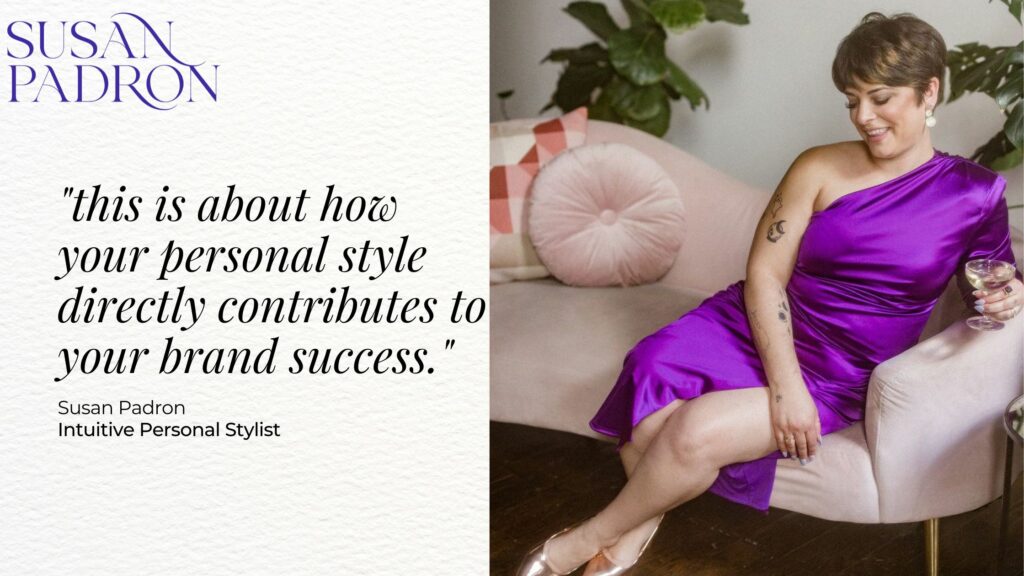
Susan Padron bio
Susan Padron is an intuitive personal stylist and an award winning author who helps you break barriers and strengthen the bond between your soul and your wardrobe. She believes in an approach that dives below the surface and reveals your unique self – building your personal style that is informed by who you are- not your limiting narratives.
Susan’s work goes beyond clothes – it empowers expansion, encourages connection, and supports you while you pursue your dreams.

